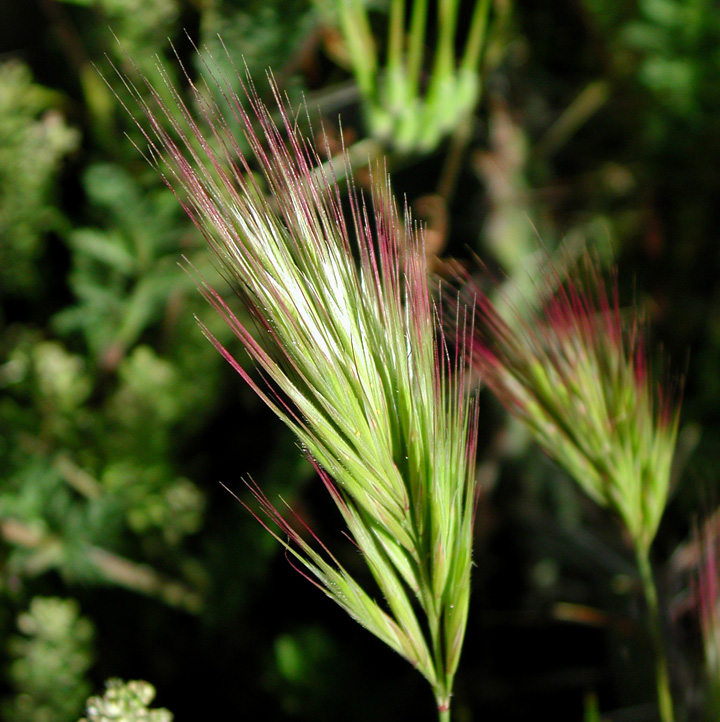Bromus
|
Family: Poaceae |
Plants perennial, annual, or biennial; usually cespitose, sometimes rhizomatous. Culms 5-190 cm. Sheaths closed to near the top, usually pubescent; auricles usually absent; ligules membranous, to 6 mm, usually erose or lacerate; blades generally flat, rarely involute. Inflorescences panicles, sometimes racemose, erect or nodding, open or dense, occasionally 1-sided; branches usually ascending to spreading, sometimes reflexed or drooping. Spikelets 5-70 mm, terete to laterally compressed, with 3-30 florets; disarticulation above the glumes, beneath the florets. Glumes unequal, usually shorter than the adjacent lemmas, always shorter than the spikelets, glabrous or pubescent, usually acute, rarely mucronate; lower glumes 1-7(9)-veined; upper glumes 3-9(11)-veined; lemmas 5-13-veined, rounded to keeled, glabrous or pubescent, apices entire, emarginate, or toothed, usually terminally or subterminally awned, sometimes with 3 awns or unawned; paleas usually shorter than the lemmas, ciliate on the keels, adnate to the caryopses; anthers (2)3. x = 7. Name from the Greek bromos, an ancient name for -oats-, which was based on broma, -food-. ©Utah State University; reproduced with permission. Key to the species as recognized in the account from which the above description is copied. Spikelets with several to many fls, eventually disarticulating between the lemmas and above the glumes, oval to narrowly oblong, subterete or laterally flattened; glumes somewhat unequal, shorter than the lemmas; lemmas 3-9-veined, 2-toothed at the tip, awnless or more often awned between the teeth; spikelets large, often in lax or drooping panicles; sheaths usually closed nearly to the top. 100, widespread in temp. reg. Gleason, Henry A. & Cronquist, Arthur J. 1991. Manual of vascular plants of northeastern United States and adjacent Canada. lxxv + 910 pp. ©The New York Botanical Garden. All rights reserved. Used by permission. |

